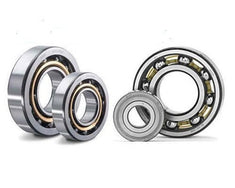Collection:Rolling Bearings
Rolling bearings transfer loads between machine components, and support and guide rotating and oscillating machine elements, such as shafts, axles or wheels. Bearings with rolling elements provi... Read more
Subcategories
Rolling Bearings

Rolling bearings transfer loads between machine components, and support and guide rotating and oscillating machine elements, such as shafts, axles or wheels. Bearings with rolling elements provide high precision and low friction. This enables higher rotational speeds while reducing noise, heat, and energy usage. They are cost-effective, exchangeable, and typically follow national or international dimension standards.
Rolling bearings can be classified into two basic categories based on the types of rolling elements they contain. The main difference lies in how they make contact with the raceways:
- Ball bearings - Balls make point contact with the ring raceways. The contact point of a bearing becomes elliptical as the load acting on the bearing increases. Having a small contact area allows ball bearings to accommodate high rotational speeds, but also limits their load-carrying capacity.
- Roller bearings - Rollers make line contact with the ring raceways. The contact line becomes somewhat rectangular when the bearing is subjected to increasing loads. This larger contact area allows it to accommodate heavier loads, but lower rotational speeds than ball bearings of the same size.






